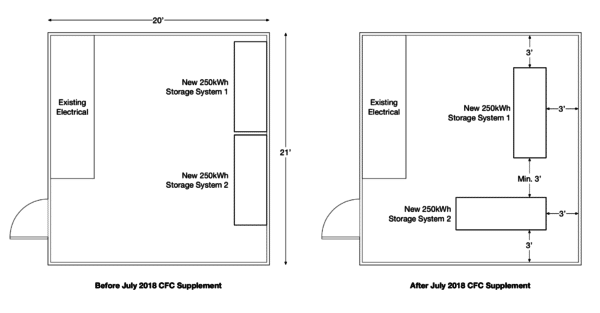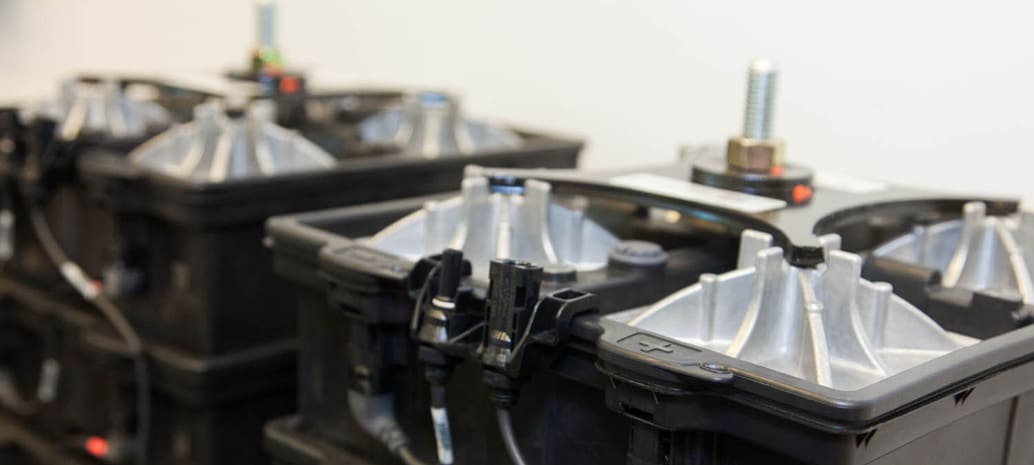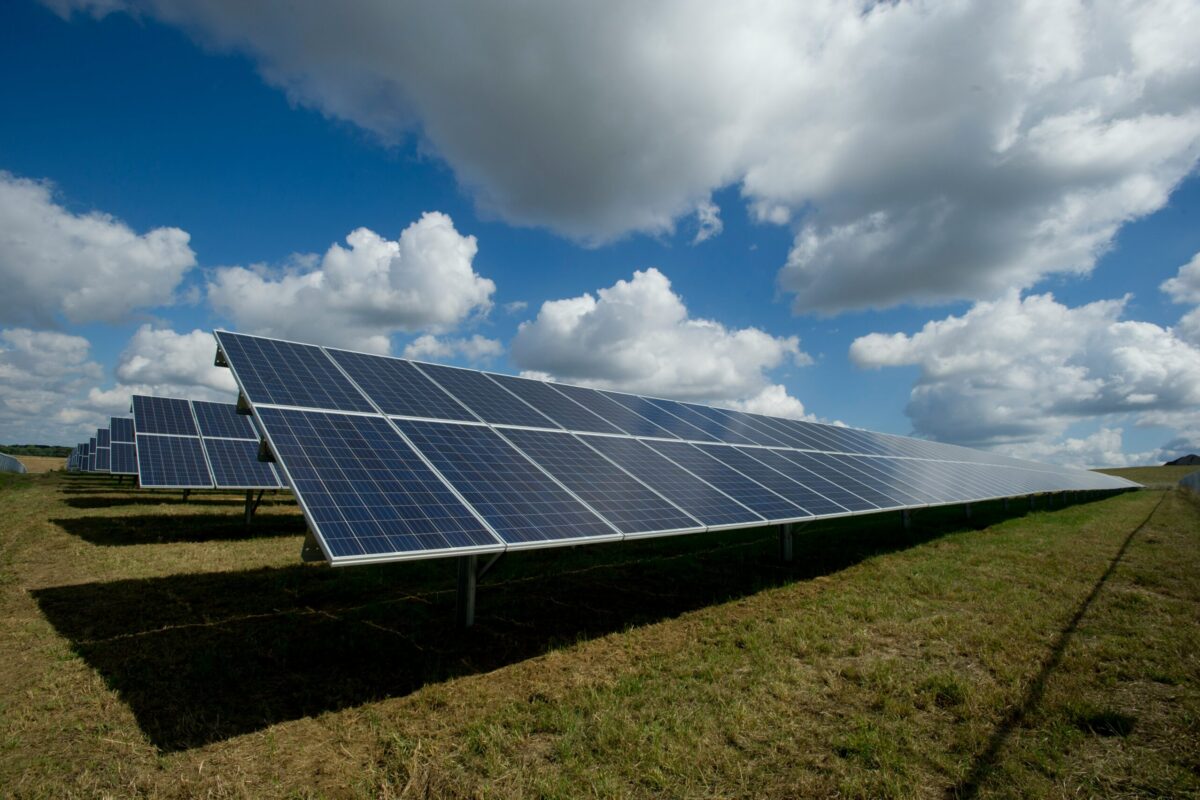
By Tripp Hyde
On July 1, 2018 the California Building Standards Commission adopted a supplement to the California Fire Code. Among other things, the code added new requirements to section 608, which covers the installation of Stationary Storage Battery Systems. These new requirements have created new challenges especially for developers trying to install behind-the-meter battery systems in and around existing buildings.
Prior to the supplement, lithium ion batteries had only three primary requirements in the Cal Fire Code: 1) appropriate signage (608.7), 2) building integrated smoke detection (608.8), and 3) seismic protection (608.9). There are some additional requirements in the Cal Building Code, but the most important is the fire rating by occupancy type of walls where indoor systems are located (the last row of Table 509 – almost always 1 or 2 hour rating is required). Table 509 still applies.
None of the above requirements applied to systems with less than 1000 lbs. of electrolyte (which is sort of a strange way to measure electrolyte seeing as it is more a gel or liquid than a solid). In my experience that means the existing code applied only to lithium-ion systems of approximately 250kWh and greater.
The new supplement makes several substantial changes that affect both indoor and outdoor systems. Much of the new code has been adopted from the new NFPA 855, “Standard for the Installation of Stationary Energy Storage Systems,” which is still just a proposed standard, but will go into effect in 2020. I have outlined the most relevant, new requirements as they pertain to lithium-ion batteries below:
608.1 Scope: the new code now applies to systems of 20kWh and greater. So now much smaller systems fall under the new code requirements. Previously the code applied to ~250kWh and greater systems.
608.1.5: Vehicle Impact Protection: Vehicle impact protection (where applicable) is now required in accordance with section 312. This protection is typically provided by 4” diameter steel bollards placed no more than 4’ apart and should rise no less than 3’ above grade.
608.2.1: Location: Battery systems cannot be higher than 75’ above the lowest level of fire department vehicle access or 30’ below the finished floor of lowest exit discharge. This essentially means storage systems can only go one or two floors above or below grade. They can also go on non-combustible rooftops if approved by the local fire official.
608.2.3: Stationary Battery Arrays: Stationary battery arrays cannot exceed 50kWh and must be spaced 3’ apart and spaced 3’ from walls and other equipment. This is a major change. If it is a pre-engineered system listed to UL9540, the array can be up to 250kWh, but for multiple 250kWh arrays, the 3’ spacing still applies. This essentially means you definitely want your system 9540 listed, and you need a larger install area to comply with the spacing requirements. See figure below.
608.2.7.1: Outdoor Installation Separation: Outdoor systems now have their own code section (608.2.7). Outdoor systems must be spaced a minimum of 5’ from lot lines, public ways, buildings, stored combustible materials, hazardous materials, high-piled stock, and other exposure hazards. This requirement has an impact on outdoor placement of the system – pay close attention to the 5’ clearance (and 10’ egress clearance – see below). For systems in non-combustible containers that can be occupied, they must be treated as as a “storage room” and comply with the 608 requirements, although the 3’ array spacing from the container wall is not required.
608.2.7.2: Means of Egress: The system must spaced 10’ from any means of egress from nearby buildings.
608.2.7.3: Security of Outdoor Areas: Outdoor areas containing a battery system shall be secured against unauthorized entry and safeguarded in an approved manner. This means your outdoor battery system needs to be fenced-in.
608.3: Maximum Allowable Quantities (Indoors): For indoor lithium-ion systems over 600kWh, the space must comply with occupancy class H-2 (high hazard). This has many code implications, including additional spacing requirements and potential fire wall construction. For most developers, systems of this size should be avoided for indoor installations.
608.5.1: Fire Suppression Systems: rooms containing stationary storage systems must have an automatic sprinkler system.
It is important to note that many of these requirements have an exception giving the local jurisdiction the authority to waive the requirement as they see fit.
While these requirements put additional burdens on developers and customers, they are helping to make the built environment a safer place. And, NFPA 855 will likely have even stricter requirements – so get your battery systems installed now!

Tripp Hyde, PE, is President of Hyde Engineering Services, Inc., a design, engineering, and consulting firm that specializes in advanced energy projects. Tripp holds Professional Engineering licenses in 11 US States and has been working in the energy industry for 10 years.
This content is protected by copyright and may not be reused. If you want to cooperate with us and would like to reuse some of our content, please contact: editors@pv-magazine.com.








Tripp Hyde,
Thank you for publishing this information. I don’t know why I’m only finding out about it in October of 2019 when it was published by you 15 months earlier.
Do you have a reference for this regulation? I looked on their web site, but could not find it.
Sincerely,
Brad Allen
Brad, in case you haven’t found a link, you can use this one: https://up.codes/viewer/california/ca-fire-code-2016/chapter/6/building-services-and-systems#608